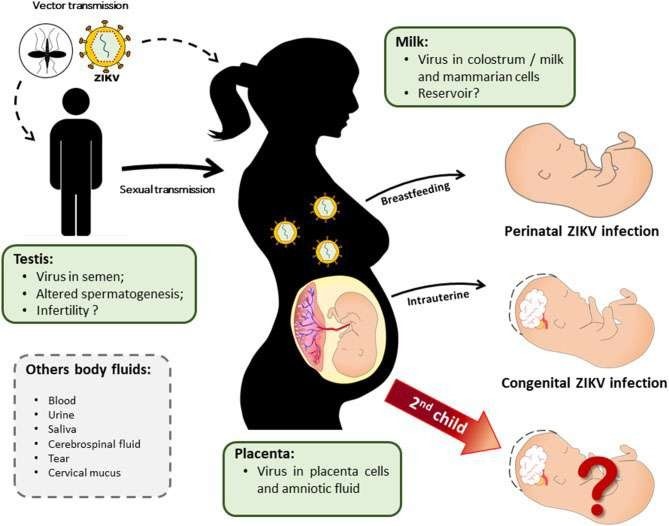A nurse is admitting an adolescent who has rubella. Which of the following actions should the nurse take?
Administer aspirin to the client.
Isolate the client from staff who are pregnant.
Initiate airborne precautions.
Monitor for the development of Koplik spots.
The Correct Answer is B

This is because rubella is a highly contagious viral infection that can cause serious harm to the developing fetus if the pregnant person gets infected. Rubella can cause congenital rubella syndrome, which can result in hearing and vision loss, heart defects and other serious conditions in newborns.
Choice A is wrong because aspirin should not be given to children or adolescents with viral infections, as it can cause Reye’s syndrome, a rare but potentially fatal condition that affects the liver and brain.
Choice C is wrong because rubella does not require airborne precautions, which are used for diseases that can spread through very small droplets that can remain in the air for long periods of time, such as tuberculosis or measles. Rubella spreads through direct contact with saliva or mucus of an infected person, or through respiratory droplets from coughing or sneezing.
Therefore, standard and droplet precautions are sufficient to prevent transmission. Choice D is wrong because Koplik spots are a characteristic sign of measles, not rubella.
Koplik spots are small white spots that appear on the inside of the cheeks before the measles rash develops. Rubella causes a pink or red rash that usually starts on the face and moves down the body.
Normal ranges for rubella antibody tests are:
- IgM: Negative or less than 0.9 IU/mL
- IgG: Negative or less than 10 IU/mL
A positive IgM result indicates a recent or current infection, while a positive IgG result indicates a past infection or immunity from vaccination.
Nursing Test Bank
Naxlex Comprehensive Predictor Exams
Related Questions
Correct Answer is D
Explanation
This is because humidification can help moisten the oral mucosa and reduce the discomfort of xerostomia. Xerostomia is a condition of dry mouth caused by reduced or absent saliva flow, which can occur after radiation therapy to the head and neck area.
Choice A is wrong because rinsing the mouth with an alcohol-based mouthwash can irritate the oral tissues and worsen xerostomia. Alcohol can also dehydrate the mouth and reduce saliva production.
Choice B is wrong because esophageal speech is a method of voice restoration after laryngectomy, not a treatment for xerostomia.
Esophageal speech involves swallowing air into the esophagus and releasing it to create sound.
It has nothing to do with saliva flow or dry mouth.
Choice C is wrong because saltine crackers are dry and hard to swallow without adequate saliva.
They can also scratch the oral mucosa and cause pain or bleeding. Offering the client saltine crackers between meals can aggravate xerostomia and increase the risk of choking.
Normal ranges for saliva flow vary depending on the method of measurement, but generally, a stimulated saliva flow rate of less than 0.7 mL/min or an unstimulated saliva flow rate of less than 0.1 mL/min is considered indicative of xerostomia.
Correct Answer is D
Explanation
Nail polish remover contains acetone, which is a flammable substance that can ignite in the presence of oxygen. Using nail polish remover around the client can increase the risk of fire and burn injuries.
Choice A is wrong because synthetic fabrics can generate static electricity, which can also cause sparks and ignite oxygen.
The client’s bedding should be made of cotton or wool, which are natural fabrics that do not produce static electricity.
Choice B is wrong because petroleum jelly is a petroleum-based product that can react with oxygen and cause skin irritation or burns.
The client should use water-based moisturizers to soothe the mucous membranes.
Choice C is wrong because alcohol-based cleaning products are also flammable and can cause fires or explosions when exposed to oxygen.
The client should use mild soap and water to clean the equipment, and follow the manufacturer’s instructions for maintenance.
Some general safety tips for home oxygen therapy are:
- Keep away from heat and flame, such as candles, matches, lighters, stoves, fireplaces, etc.
- Do not smoke or allow others to smoke near the oxygen source
- Do not use aerosols, vapor rubs, oils, or other products that contain flammable substances near the oxygen source
- Store oxygen tanks or cylinders in a well-ventilated area away from direct sunlight and heat sources
- Secure oxygen tanks or cylinders to prevent them from falling or rolling
- Use the exact rate of oxygen prescribed by the doctor for each activity
- Check the oxygen gauge or level regularly and call the medical supply company when it is low
- Use a humidifier bottle if prescribed by the doctor to prevent dryness of the mucous membranes
- Change the nasal cannula, mask, and tubing as instructed by the medical supply company to prevent
Whether you are a student looking to ace your exams or a practicing nurse seeking to enhance your expertise , our nursing education contents will empower you with the confidence and competence to make a difference in the lives of patients and become a respected leader in the healthcare field.
Visit Naxlex, invest in your future and unlock endless possibilities with our unparalleled nursing education contents today
Report Wrong Answer on the Current Question
Do you disagree with the answer? If yes, what is your expected answer? Explain.
Kindly be descriptive with the issue you are facing.
